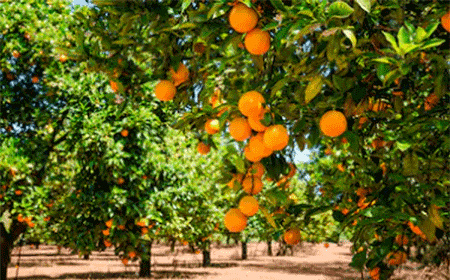The citrus industry in Belize, which, records show, began in 1913, has had its ups and downs over the years, but the present down, which began about five years ago and continues up to today, May 2019, is the worst the industry has ever seen. The citrus industry will rebound. Citrus growers are largely a hardy, hopeful group, so the question is just when the good days will be back again.
http://belizeinfocenter.org says the industry “started in 1913 when three investors – Dr. S. O. Browne, Mr. A. E. Vine and Mr. W. A. J. Bowman imported nine hundred budded grapefruit trees from Florida. These were planted in the Stann Creek Valley. The industry grew and by 1954, it reached the million dollar exports mark…. Income from the citrus industry has increased from over $33 million in 2002 to $95 million in 2011.”
Mr. Luis G. Tzul, Senior Loans Officer at CGA, in his paper, “Report of Damage by Hurricane Richard to the Citrus Industry of Belize”, said that the reputation of Belize’s grapefruit impressed the Honorable G.G.R. Sharp (of Jamaica) when he visited Belize in 1931, and he became a major investor in the industry.
Tzul writes: “The citrus industry had grown from fifteen acres in 1913 to eight hundred and fifty acres in 1945. The Citrus Company of British Honduras was established at Middlesex in Stann Creek in 1933; it was transferred to Pomona in 1942. The canning of grapefruit and orange juice was started in Stann Creek in 1935. The first grapefruit section in tins was processed on an oil stove and the output was 5 cases per day. The Citrus Company of British Honduras Ltd. first opened its citrus processing operations in 1948 under the ownership of the Sharp brothers from Jamaica.”
By the 2000s the citrus industry had grown to over 45,000 acres, and for several years it was Belize’s top foreign exchange earner. An SIB (Statistical Institute of Belize) graph on export earnings of citrus products for Belize shows earnings of $120 million in 2005, $123m in 2007, $162m in 2012, $100m in 2014, $99m in 2016, and $79m in 2017, the 2017 earnings being a steep decline from just five years previously.
Depressed earnings in citrus had never been about production, except in years when Belize was hit by hurricanes. There was a decline in citrus production after Hattie (1961), and Greta (1978). Low market prices in the 1970s and again in the 1990s/early 2000s put pressure on the industry, but these market busts never lasted so long that they brought the industry to its knees, as is the case now.
In the last decade the citrus industry has seen more than its regular share of troubles, physically when it was hit by two hurricanes, Richard (2010) and Earl (2016), and politically when there was a division in the ranks over CPBL (Citrus Products of Belize Limited) and the forming of a rival growers association, Belize Citrus Mutual, but those pale beside the entry of the citrus greening disease which was first detected around 2009.
Belize had always been on the lookout for potentially dangerous diseases, the most notable one being the Citrus Tristeza Virus (CTV). This virus, which is particularly devastating to citrus grown on the most popular rootstock used in Belize, the sour orange, had done major damage to citrus industries in Florida, Brazil and other parts of the Americas, and Belize had taken measures, diversifying to other rootstocks to prepare for what was seen as an inevitable Tristeza outbreak in the country.
The Tristeza disaster never came, but another disease, citrus greening, did. Citrus greening could not have picked a worse time to hit Belize, but it is unlikely that the timing matters. The disease has run havoc on the industries of two of the world’s top citrus producers, Florida in the USA, and Brazil. Citrus greening “was responsible for the decrease in the production of oranges for processing in the United States from 7.98 to 2.22 billion tons (72.2% reduction) from 2007–08 to 2017–18 (www.frontiersin.org), and Brazil has had to destroy over 30 million infected trees (croplife.org).”
Citrus greening, according to www.floridacitrus.org, is “also known as Huanglongbing or HLB”, and it “is a

